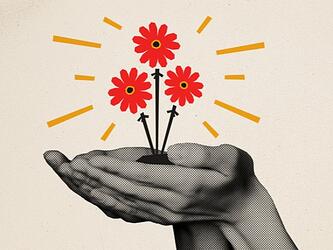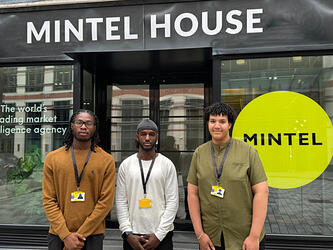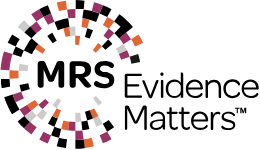A safer approach
HIV has a significant impact on communities in South Africa, where approximately one-fifth of women in their reproductive years (aged 15-49 ) are HIV positive. Empowering and understanding adolescent girls and young women (AGYW) aged 15-24, who are at the highest risk of contracting HIV, is critical to managing its transmission.
This was the aim of a recent study funded by the Bill & Melinda Gates Foundation through a cross-continental partnership between behavioural science and design consultancy Final Mile Consulting, strategy and innovation company Upstream, the AIDS Vaccine Advocacy Coalition in the US, and market research company Ask Afrika in South Africa.
The goal was to understand HIV prevention-related decisions within the context of young women’s lifestyles and their take-up of prevention products – such as condoms or oral, injection or ring HIV prophylaxis drugs – to help reduce HIV transmission in South Africa.
The study forms part of the HIV Prevention Market Manager project, which partners with various organisations involved in HIV prevention research globally to ensure that there is a portfolio of region-specific behavioural-change solutions available and accessible to those who need them most.
The study sample was selected from regions in South Africa with a high incidence of HIV, where young women are at the highest risk – it was split between urban and rural areas in the KwaZulu-Natal and Mpumalanga provinces.
Goals-based behaviour
The research team used a behavioural-design approach, including qualitative research with 240 young women aged 15-24, followed by a quantitative segmentation phase with 2,000, to get to the core of their decision-making journey and obtain a nuanced understanding of what influences them. The influencers for young women included matriarchs (mothers, aunts and sisters), community healthcare workers and nurses, as well as men.
The research design combined gamification with exploratory in-depth techniques, involving young women making decisions in realistic scenarios. The sessions were engaging, fun, and offered a safe space for respondents to share stories openly.
The intention was to understand how young women typically navigate sexual decisions and sustain safe sexual behaviour throughout their life. Young women’s lifestyles and behaviour are not homogeneous, the research found, but rather based on goals, relationship dynamics and risk perceptions.
The findings revealed that many behavioural factors influence their decisions in terms of safe sex. For instance, taking an HIV test is often seen as a preventative measure, and HIV only becomes a focus for an individual who has contracted the virus and is treating it; the sentiment was: ‘If I don’t have it, why bother?’
Relationship goals appear to be a key driver in sexual-health behaviour – for example, the use of condoms can imply a lack of trust in a relationship, even if it is common knowledge that not all parties are monogamous. This means that women are often caught in a dilemma of choosing to use condoms and create mistrust in their relationships – increasing the chances of HIV transmission.
Continued support
In the quantitative phase, segmentation was used to understand what motivates different young women, with segments linked to three key relationship goals based on lifestyle improvement, affirmation or gaining respect. Young women weigh up these goals against their perception of the relative risk of contracting HIV.
Interestingly, demographic factors such as age, income and location were not distinct behavioural differentiators. Therefore, gaining an in-depth understanding of the cultural relevance, influences, and social and emotional needs that affect future decisions was vital, as young women in these regions factor a number of often conflicting considerations when making choices.
This research only scratches the surface of South African young women’s reality and the challenges to prevent HIV transmission. The decisions young women make are deliberate; they have agency. The programmes and applications developed as a result of this research should help
them to make better decisions, but it is challenging, as it requires aligning with their relationship goals.
Young women in these regions may also need continued support, rather than one-off counselling, to help them better negotiate with their partners. Intervention must go beyond promoting preventative practices or product use.
Gaining an in-depth understanding of young women will result in more tailored programmes and appropriate messaging – making notable difference in the lives of these young women and future generations in South Africa.
Understanding the path to progress
Based on the findings, the research team developed a behavioural-journey framework with five stages that explain the relationship and sexual health decisions of young women in South Africa.
- Shaping my opinion: filtering what I see in the community and forming an opinion based on my relationship goal
- Evolving habits: sticking
consistently to my choices without deliberation and adapting my routine as my life changes - Reality check: experiencing a reality check in my relationships changes my opinion and this change gives me comfort
- Re-evaluating partners: forming new ways to deal with my partners, driven by my goal and my ability to cope
- Embedding habits: trying to make new choices because I want to realign my relationships with my goals.
Andrea Rademeyer is chief executive and founder of Ask Afrika
This article was first published in Issue 25 of Impact.

We hope you enjoyed this article.
Research Live is published by MRS.
The Market Research Society (MRS) exists to promote and protect the research sector, showcasing how research delivers impact for businesses and government.
Members of MRS enjoy many benefits including tailoured policy guidance, discounts on training and conferences, and access to member-only content.
For example, there's an archive of winning case studies from over a decade of MRS Awards.
Find out more about the benefits of joining MRS here.













0 Comments